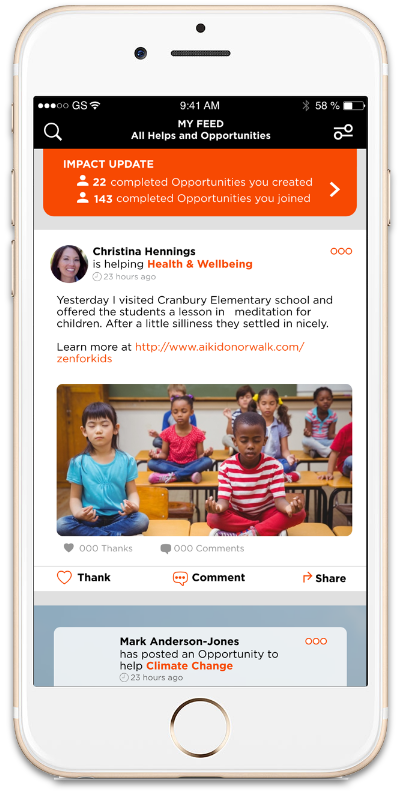How to Create Care Packages For Those in Need
By: Phillip Britt
Roughly half a million people experience homelessness on a given night throughout the U.S., and whether they’re moving from shelter to shelter or living outside, basic necessities are difficult to secure.
If you come across an individual in need of housing, use your judgment to decide whether you’re able to help them with some non-perishable food that they can store without refrigeration and open without a can-opener, the Coalition for the Homeless recommends. Protein bars are a good option. A more long-term solution: help them get to a local shelter where they can receive ongoing support.
There are other ways you can help as well, but one activity that will go a long way is to create care packages for organizations fighting homelessness in your community. To get started, follow the Poverty & Hunger interest on the ThatHelps app, and search for shelters in your area. Remember: you should tailor your package according to the specific recommendations that individual organizations provide, but don’t be afraid to include a personal touch, be it gently used towels, or that teddy bear your kid once couldn’t live without. Here’s what else is often encouraged to include:
Toiletries
These are nearly as essential as food and clothing, says Mauricio Huertas, development associate for The Boulevard, a Chicago organization that provides medical respite care, holistic support and housing services to help ill and injured homeless adults. Among the most needed items, according to Huertas, are shaving kits, moisturizers, hair care and styling products, eye drops, soap, tweezers, trimmers, tissues, wet wipes, combs, hair brushes and toothbrushes.
Before including toiletries into your care package, consider who your charitable organization of choice serves. While some organizations have a large, diverse base, others have specific constituencies. Some, like The Boulevard, work primarily with men, while others work with women or families. If you’re donating to a women’s organization, considering including feminine hygiene products or baby products like diapers.
Where to Donate: The Boulevard, Women in Need (WIN) and Women’s Shelters.
Children’s Toys and Supplies
Throughout September 2018—peak back-to-school season—nearly 23,000 children faced homelessness in New York City alone. Include backpacks, pens, pencils, notebooks, folders and other school supplies in your care package to ensure they can put their best foot forward at school, despite the challenges they’re facing. “Add books and toys as well, to ensure they have an opportunity to still be kids, no matter where they’re living,” Huertas recommends.
Where to Donate: Toys For Tots, Ronald McDonald House Charities and Stuffed Animals For Emergencies.
Clothing
Especially during cold weather months, winter clothing becomes a prized commodity, so add socks, thermals shirts, coats, hats, gloves and hand warmers to any winter care package. If you’re putting a package together while the weather is warm, include durable jeans, T-shirts and kids clothing. Consider purchasing some new undergarments to donate as well, like sealed multi-packs of underwear.
Where to Donate: New York Cares and Care.
Housewarming Gifts
Many organizations working with those experiencing homelessness help them find new places to live. These types of organizations will accept household cleaning items, linens, blankets, pillows, basic dishes and cooking utensils as donations to help fill new homes. Even furniture donations may be welcome, but be sure to organize the pick-up and drop-off process well in advance, as bulky items may be difficult to store without sufficient notice.
Where to Donate: The International Rescue Committee.
Medicine
Over-the-counter pain medication, non-alcoholic mouthwash, bandages, antifungal ointments, cough and cold medication, reading glasses and first-aid kits are in demand. Don’t ever donate unlabeled or prescription medication, however, Huertas warns.
Where to Donate: SIRUM and World Medical Relief.
Transportation
Prepaid cards for public transportation are in high demand uniquely in urban areas. Access to transportation can make the difference between being able to find a new job or missing out on a major opportunity, so such prepaid cards can be worth far more than the initial dollar value to the homeless.
Where to Donate: The Lighthouse and the LA Metro.
Food
Shelters and food pantries are always looking for donations of non-perishable foods. Canned products like beans, mixed vegetables, soups, fruits and tuna as well as sugar-free snacks, evaporated milk and chili are always in demand, but some organizations may also accept boxed pasta, pancake mix and microwaveable meals.
Where to Donate: Why Hunger and Action Against Hunger.
Want to give a refugee family a warm welcome when they arrive in the United States? The International Rescue Committee assembles welcome baskets of kitchen items like as pots, pans, utensils, glasses, plates, mixing bowls and other supplies so that families can start cooking and feel at home right away. A $120 donation can provide a welcome basket for one newly-arrived refugee family—and makes a great holiday present in a family member or friend’s name!
Photo: Steve Knutson


